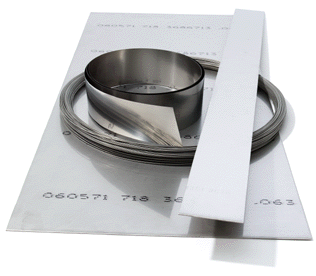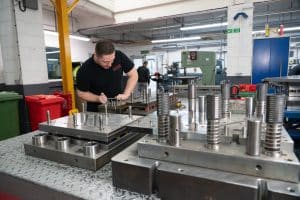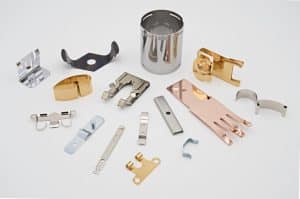Here at European Springs we are a leading manufacturer for a wide variety of spring types, and we are proud to possess a spring for any eventuality. However, a key factor within the performance of any spring is actually the material it is made from, and this fact can often be overlooked by many casual observers.

Whilst we might notice the varying capabilities of different kinds of springs, the material a spring is made from is usually a far less obvious contributor to its performance. In actual fact, the material used in a spring can have just as much of an affect as a design variant, so here are a few examples of the sort of materials that we deal with when making our springs.
Stainless Steel
Most of our springs, particularly the simpler styles of design, make use of cold drawn stainless steel in their manufacture. This sort of material can be used successfully at most normal temperatures, although variants can also be heat treated for use alongside greater heat. All our stainless steel is corrosion resistant and formed from only the finest materials; so you really couldn’t find a more reliable material for most of our springs.
Copper Alloys
Copper alloys are a more expensive option for spring designers to make use of than many alternative materials, but they provide a number of invaluable properties for certain industries to utilise. Copper alloys can withstand sub-zero temperatures, which gives springs created from these materials a wealth of special capabilities in frozen environments. Copper also maintains exemplary electrical properties and possesses great resistivity; so the higher cost of copper alloy springs brings a variety of undoubted benefits with it.
Resistant Spring Steel
We use spring steel that is optimised to resistant a variety of different elements. In addition to heat treated springs, such as the super alloys that are needed to solve a range of problems in the offshore industry (reported in a previous blog), we can design anti-magnetic springs for use in unstable environments, and also especially corrosion resistant spring materials as well. Certain materials, such as Tungsten, intrinsically possess the latter property, so we make use of these materials for really sensitive purposes; like medical components.
We use far too many different materials to list all of their properties in a single blog, but you can find out more about them on our spring materials page. We’re the market leader for springs and pressings for a reason, and part of that reason is undeniably the superb materials that we use. So whether you need quality tension spring manufacturers to meet a bulk demand, or a genuinely bespoke solution to meet a unique requirement, we’re here to help. Do not hesitate to get in touch with us now to find out more.
European Springs


